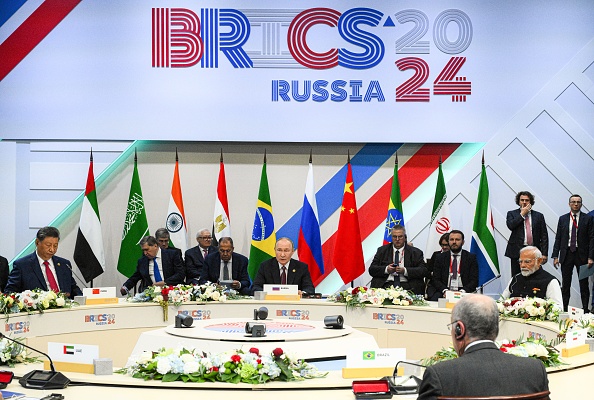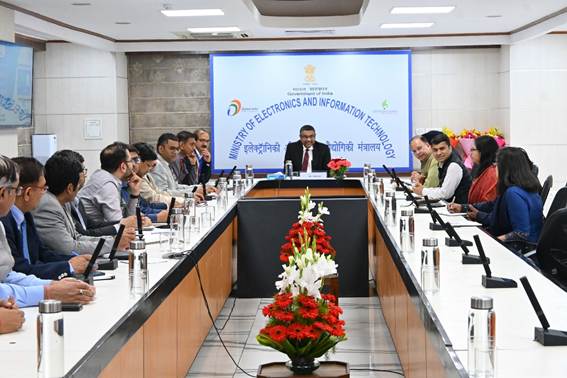The outcome of the 16th BRICS Summit in Kazan, Russia followed by India’s bilateral meeting with China underscores yet another diplomatic milestone for India. After four years, China has agreed to revert to the pre-April 2020 situation on the disputed sites along the Line of Actual Control (LAC) in Eastern Ladakh. The border row began with a violent hand-to-hand clash between Indian and Chinese troops in June 2020 in the Galwan Valley. Chinese troops violated the LAC and disturbed the agreed status quo, claiming Indian territory in the Galwan Valley area and other places in Ladakh as Chinese territory. Since then, relations between the two nations have been at their lowest, with massive troop deployments and infrastructure development on both sides.
UNDERLYING ISSUE
The LAC remains neither fully demarcated nor clearly defined, with no mutually agreed-upon alignment or official maps. This lack of clarity has led to frequent disputes between border troops. India considers the LAC to be 3,488 km long, stretching through Jammu & Kashmir, Ladakh, and the Indian states of Uttarakhand, Sikkim, and Arunachal Pradesh. However, China asserts that the LAC is only about 2,000 km long, and discussions should be limited to that stretch, with its several friction areas and overlapping claims. In eastern India, the LAC extends into the McMahon Line, an 890 km demarcation between Arunachal Pradesh and Tibet.
China disputes the legitimacy of the McMahon Line, calling it a relic of colonial injustice, and claims large portions of territory on the Indian side of the LAC, including areas in Ladakh, Pakistan-occupied Kashmir, and Arunachal Pradesh (which China refers to as South Tibet). These claims date back to 1950 when China annexed Tibet. The India-China border dispute led to a war imposed by China in 1962 and subsequent skirmishes, with the Galwan Valley clash being the most recent.
PAST LAC AGREEMENTS BETWEEN INDIA AND CHINA
India and China signed border agreements in 1993, 1996, and 2005, with key provisions aimed at maintaining minimal troop presence along the LAC. These agreements prohibit the use of firearms, restrict military activity, and include confidence-building measures, such as a ban on conducting blast operations or using hazardous chemicals within 2 km of the LAC. The agreements also stipulate that both sides will respect the LAC until the boundary issue is fully resolved.
In 2012, India and China established the Working Mechanism for Consultation & Coordination on India-China Border Affairs (WMCC) to address increasing border tensions. The WMCC, which includes both diplomatic and military representatives, was designed to facilitate dialogue in the event of troop standoffs. The two nations also signed a “Border Defence Cooperation Agreement” in 2013, which prohibits tailing the other’s patrols and reaffirms the principle of not using force against one another.
However, despite these agreements, the border dispute persists, with overlapping territorial claims complicating matters. To resolve the issue, both countries have traditionally followed a bilateral dialogue process to maintain peace and tranquillity in the border areas.
ESCALATION OF TENSIONS
In the current border row, which started with the Galwan Valley clash, Indian troops observed massive troop and armament deployment by China in the Eastern Ladakh border areas in April 2020. Furthermore, Chinese troops hindered India’s normal patrolling activity in the area in May 2020, leading to a face-off. Following bilateral agreements and protocol, discussions were held between the involved group commanders to resolve the issue, but the effort failed.
In mid-May, Chinese troops made several transgression attempts in the western sector of Ladakh, including Kongka La, Gogra, and the north bank of Pangong Lake. This was followed by a violent clash on 15 June 2020 in the Galwan Valley area. On the night of 29-30 August 2020, Chinese troops again tried to change the status quo along the LAC in the south bank area of Pangong Lake.
PROGRESS THROUGH DIALOGUE
Several dialogue mechanisms were initiated to resolve the tense relationship after the Galwan clashes, with India demanding three key areas of focus to reach a solution: respect for the LAC agreement; no unilateral alteration of the LAC status quo; and adherence to all agreements and understandings between India and China on the LAC in their entirety. Talks were held at diplomatic and military levels over the last four years.
After nineteen rounds of India-China Corps Commander level meetings following the clashes, several meetings of the WMCC, and discussions between the foreign ministers of both countries, solutions acceptable to both countries were finally reached. These solutions were in sync with India’s demand that China revert to the pre-April 2020 situation along the LAC.
With disputes settled in the Gogra-Hot Springs, Pangong Tso, and Galwan Valley areas, Depsang and Demchok remained as friction areas. With both countries now agreeing to resume patrolling up to their older patrolling points in the areas of dispute along the LAC, the current breakthrough should be seen as a welcome development and the first positive step.
The significance of the latest development can also be gauged by the fact that soon after the breakthrough, both countries announced a bilateral meeting between their top leaders on the sidelines of the BRICS Summit, which was not announced before the Summit. This reflects a serious commitment by both countries to move ahead towards further peace, with India’s Prime Minister Narendra Modi and China’s President Xi Jinping holding a one-to-one bilateral meeting on 23 October 2023 in Kazan. The last such bilateral meeting was held in October 2019 when India hosted Xi Jinping for an informal summit in Chennai.
MUTUAL TRUST AND SOVEREIGNTY CONCERNS
For any bilateral relationship to prosper and grow, two factors are essential: mutual trust and respect for each other’s sovereignty concerns. Talks with China have followed these principles. This has been at the core of India’s demands to ease the tense atmosphere with China regarding border disputes. India has always chosen the path of peace and reconciliation to maintain tranquility in the border areas, but not at the cost of its territorial integrity and sovereignty concerns. The country made it clear to China that normalising bilateral relations is not possible unless the LAC agreements are respected.
The BRICS success repeats yet another diplomatic achievement by India – the 73-day-long Doklam standoff resolution in 2017. The Doklam region became a significant point of tension between India and China following a lengthy military standoff sparked by China’s efforts to build a road through territory that Bhutan claimed as its own. Concerned about its strategic interests and sovereignty, India stepped in to halt the construction, resulting in a tense confrontation between Indian and Chinese forces.
Discussions to resolve the Doklam standoff saw robust Indian diplomacy in action to galvanise world opinion in its favour, with major powers like the US favouring the return of the status quo in the area. Another BRICS Summit in 2017 witnessed this. Xi Jinping invited India’s Prime Minister Narendra Modi to join the Summit in Xiamen in China’s Fujian province on 3-5 September 2017. The bilateral agreement between the two leaders sent out a message that the Doklam standoff was no longer an issue, emphasising peaceful co-existence.
THE PATH FORWARD: STEPS TOWARD NORMALIZATION
The recent agreement involves the disengagement of troops in the Depsang Plains and Demchok, starting on 23 October. Both nations are expected to complete the withdrawal of troops and dismantling of infrastructure by 29 October. Patrolling up to the original patrol points along the LAC is set to resume by the end of the month, effectively restoring the situation to pre-April 2020 positions.
The agreement represents the effectiveness of India’s diplomatic engagement and its commitment to the peaceful resolution of disputes while safeguarding its sovereignty and territorial integrity. Continued dialogue and adherence to mutual agreements along the LAC will be crucial in ensuring lasting peace and cooperation between the two nations further.
DIPLOMACY: NEW DIMENSIONS
India, being the largest functioning democracy in the world, has a clear message for the world: find peaceful resolutions to all conflicts. The country has redefined its diplomatic strategy in the last decade to strengthen relationships with neighbors, countries across the world, and global organizations. This redefinition has occurred within a changing global structure and alongside India’s emergence as an economic and military power. Today’s India conveys the message of a multilateral world with regional stability and plays a constructive peacemaker’s role on the world stage.
Today, with its borders secured and its economy being the fastest-growing among major economies, India conveys the message that the solution to all problems lies at the dialogue table, and the latest India-China border talks, like India’s diplomatic engagement with many other countries and blocs, are testimony to that.
The Group of Seven (G7) nations are one of the most powerful blocs in the world today. Formed by the world’s advanced economies and functioning democracies – the United States, the European Union, Germany, France, Japan, the United Kingdom, Canada, and Italy – it is becoming more engaged with India. The country has been invited as a guest to recent G7 summits, where it has actively participated in discussions on global challenges such as climate change, sustainable development, and international peace and security.
India follows the Act East Policy, and its growing friendship with the Association of Southeast Asian Nations (ASEAN) further highlights its commitment to regional cooperation. India has sought to enhance economic, strategic, and cultural ties with ASEAN countries on a mutual basis. This includes collaboration in areas such as trade, investment, defence, and connectivity projects.
The country has emerged as a leader of the Global South initiative. The Global South represents a grouping of developing nations across different continents. During its G20 presidency, India played a crucial role in advocating for the inclusion of the African Union as a permanent member of the G20 in 2023.
During the COVID-19 pandemic and its aftermath, India sent medical supplies to over 150 countries. The country is fighting a battle for food security in developing nations, particularly after the COVID-19 pandemic and the Russia-Ukraine and Israel-Gaza-Lebanon conflicts, which have affected trade routes and, thus, food logistics across the world. There is a 10% cap on the subsidy bill for a WTO country, and India demands a revision to make food and nutrition more accessible to the needy population in India and across the world.
India has maintained a principled and neutral stance, advocating for peace, dialogue, and diplomacy in the Russia-Ukraine and Israel-Gaza conflicts, and the country’s stance has been appreciated globally. India has called for an immediate cessation of hostilities between the warring parties and urged them to resolve disputes peacefully. The country has reiterated its commitment to a two-state solution for an independent Palestine and a sovereign and secure Israel.
Diplomatic finesse has become part of India’s external communication policy in its dealings across the world, be it with its neighbors or any other country, or with existing or rising power blocs like BRICS, the Shanghai Cooperation Organisation (SCO), the Quadrilateral Security Dialogue (QUAD), the Global South, the Indo-Pacific Economic Framework for Prosperity (IPEF), the G7, the G20, or the United Nations. More significantly, the last decade has seen the policy become increasingly linked to India’s internal needs and sovereign concerns.




















